Decades of aerial efforts have transformed desert into greener locales nationwide
 An aerial view of a brigade of the Search and Rescue Force of the People's Liberation Army Air Force assembling at an airport. (LIU HONGCHAO / FOR CHINA DAILY)
An aerial view of a brigade of the Search and Rescue Force of the People's Liberation Army Air Force assembling at an airport. (LIU HONGCHAO / FOR CHINA DAILY)
A brigade of the Search and Rescue Force of the People's Liberation Army Air Force has "rooted" themselves in the desert for decades, sowing seeds from the air to help restore vegetation and combat poverty in rural areas in addition to their routine training.
They have been tasked with aerial seeding and sand control since the early 1980s. For 39 consecutive years, they have sown seeds in more than 130 counties and cities across seven provinces and autonomous regions, including the Inner Mongolia, Sichuan, Shaanxi, Gansu and Qinghai, spreading more than 10,000 metric tons of seeds over 1.73 million hectares of land.
Dubbed "the Green Eagles", the brigade has long been committed to aerial seeding and helping to alleviate poverty. It was awarded the title of "role model of the times" by the Publicity Department of the Communist Party of China Central Committee on Wednesday.
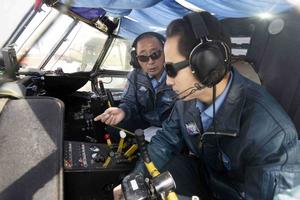 Pilots check the condition of an aircraft before a task. (LIU CHANG / FOR CHINA DAILY)
Pilots check the condition of an aircraft before a task. (LIU CHANG / FOR CHINA DAILY)
Since the early 1980s, the central government began to place more importance on ecological management, especially in the western part of country which is characterized by vast mountains and the Gobi Desert.
Through aerial seeding, sowers can quickly cover a vast amount of land at a low cost. The Communist Party of China and the central government thus called on the Air Force to take part in flying missions supporting agricultural and forestry construction.
Answering the call, the Air Force assembled aircraft, trained crews and flew west to embark on the aerial seeding project that has lasted for decades. In 1982, the brigade successfully completed their first sowing mission in Linxia prefecture, Gansu province, despite lacking sufficient information, equipment and experience.
Although aerial seeding may sound as easy as spreading seeds from the air to the ground, Xin Jiacheng, the brigade's commander, said it is quite difficult and requires lots of professional techniques.
 Pilots with the brigade pose with Mongolian herders in a desert they have helped transform into grassland through aerial seeding in the Inner Mongolian autonomous region. (DING SHAOXUAN / FOR CHINA DAILY)
Pilots with the brigade pose with Mongolian herders in a desert they have helped transform into grassland through aerial seeding in the Inner Mongolian autonomous region. (DING SHAOXUAN / FOR CHINA DAILY)
Each sown area is divided into 50-meter-wide belt zones, and the amount of seeds sown per square meter is scientifically planned, Xin said.
The optimum height for seed dropping is exactly 50 meters, and pilots must maneuver aircraft to maintain that height during sowing. This is considered an ultra-low-altitude operation and has been practiced tens of thousands of times.
"There's a lot to ask of a pilot when it comes to how we should fly and how to sow," Xin said. "If we don't fly straight, the green belt zone will be curvy looking from above, and if you miss a section, the chain may break and the surrounding vegetation may not live."
Pilot Ren Bin also stressed the importance of accuracy. "Whether we fly well or not, the land will not lie. If we don't fly well or fail to sow the seeds into their proper position, the success rate of seedling and forestation growth will be greatly affected," he said.
Ren added that his instructor once told him that when he flew the plane at an ultralow altitude, "50 meters is 50 meters. One meter higher or lower will not be allowed".
 A Yun 5 aircraft of the brigade takes off for an aerial seeding mission in Linxia, Gansu province, in May, 1982. (PHOTO PROVIDED TO CHINA DAILY)
A Yun 5 aircraft of the brigade takes off for an aerial seeding mission in Linxia, Gansu province, in May, 1982. (PHOTO PROVIDED TO CHINA DAILY)
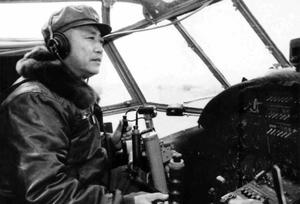 Pilot Bo Wenyu participated in the country's first aerial seeding task in the early 1980s. (PHOTO PROVIDED TO CHINA DAILY)
Pilot Bo Wenyu participated in the country's first aerial seeding task in the early 1980s. (PHOTO PROVIDED TO CHINA DAILY)
Ren said it was only after countless practice to create muscle memory that he is now able to fly over the belt zones precisely and sow seeds evenly.
In order to capitalize on the best meteorological conditions, such as the rain, the pilots usually wake up at 5 am every day in early summer and work about 10 hours a day with little rest. During the day, the blazing sun turns the cabin into a sauna, leaving the pilots drenched in sweat by the time they finished flying.
Furthermore, as the cabin is not sealed, rapid ascent or descent puts their eardrums under air pressure, causing many of the pilots' eardrums to painfully bulge.
Most of the time, temporary runways are rolled out on dirt slopes for takeoff and landing. Some runways are very narrow and are not as wide as aircraft wings, while others are on top of mountains.
"Our first consideration is not whether the working conditions are difficult, but whether the climate is conducive to the growth of seeds," said Song Zhanqing, a former pilot.
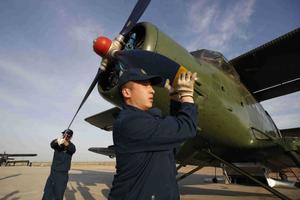 Mechanics run a safety check on an aircraft before a seeding mission. (LIU CHANG / FOR CHINA DAILY)
Mechanics run a safety check on an aircraft before a seeding mission. (LIU CHANG / FOR CHINA DAILY)
The difficult mission has born fruit over the years. Yulin city in Shaanxi province is located on the edge of the Mu Us Desert and has been forced to relocate three times throughout the years because of the frequent sandstorms.
In 2014, after more than 30 years of aerial seeding work, about 57.3 million hectares of drifting sand were put under control, and Yulin's vegetation rate rose from 1.5 percent to 45.2 percent, turning the city into a livestock product base and granary of the province.
"Seventy-five percent of the city's sandy areas were transformed into green areas by aerial seeding," said Shi Changchun, head of Desert Control Research Institute of Shaanxi province, calling the results "a miracle".
Elsewhere, the annual precipitation in Alshaa Left Banner, located at the intersection of the Tengger and Ulan Buh deserts in the Inner Mongolia, was once deemed too low to conduct aerial seeding.
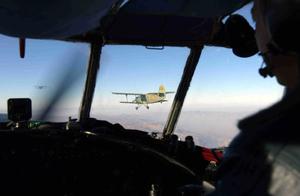 A pilot takes part in a drill. (YU HONGCHUN / FOR CHINA DAILY)
A pilot takes part in a drill. (YU HONGCHUN / FOR CHINA DAILY)
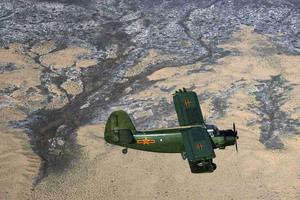 A Yun 5 aircraft flies over the Tengger Desert. (LIU CHANG / FOR CHINA DAILY)
A Yun 5 aircraft flies over the Tengger Desert. (LIU CHANG / FOR CHINA DAILY)
As of last year however, the brigade has sown seeds on about 387,000 hectares, forming a "green belt zone" 3 to 20 kilometers wide that cuts off the connection of the two deserts.
The vegetation brought by the brigade has also boosted related industries, including animal husbandry and tourism. Liu Hongyi, director of a forestry workstation at Alshaa Left Banner, said at the end of last year, all 35 local poor households were lifted out of poverty thanks to the economic benefits brought by aerial seeding.
"The most satisfying moment was when I flew the plane over the former sowing area and saw the lush mountains and trees covering the land. I felt that all the efforts were worth it," Xin said.
zhangyangfei@chinadaily.com.cn


